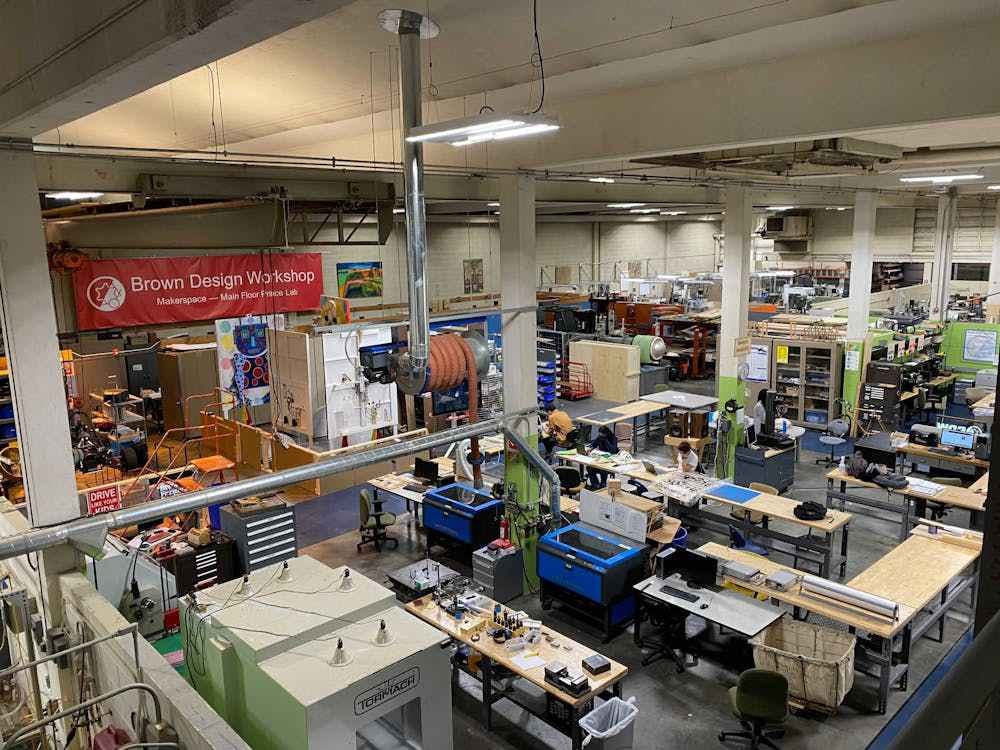The School of Engineering added a new design engineering concentration to their degree offerings, according to a press release from late August. The new concentration connects to a variety of subject areas — from data science to graphic design — and will allow students to apply engineering principles to their unique interests, the press release reads.
Many University community members have been pushing for this new 19-credit Bachelor of Science, said Deborah Mills-Scofield ’82, adjunct professor of engineering and mentoring maven at the Nelson Center for Entrepreneurship.
Over the last decade, there have been more than ten independent concentrations related to design engineering, Mills-Scofield said. These student-driven concentrations demonstrated to faculty and administrators that students were interested in pursuing the degree path, opening up opportunities for discussion within the department, she added.
Dean of Engineering Tejal Desai ’94 called the new program “a natural progression in meeting the increasing student and societal demand for ways to combine engineering and design” in an email to The Herald.
“It also reflects our ongoing commitment to prepare students to approach increasingly complex problems from multiple perspectives, and to invite and welcome students from a wide variety of backgrounds and academic interests to consider engineering as a field of study and career path,” she wrote.
According to Mills-Scofield, there has been a notable increase in the number of undergraduates interested in design engineering after the course ENGN 0032: “Introduction to Engineering: Design” launched in Fall 2020.
“The course grew unbelievably,” she said. With over 300 students registered for the course, ENGN0032 is one of the largest at the University this semester.
Jules Silva ’26, an intended design engineering concentrator who took the course last fall, is now serving as one of the class’s teaching assistants. They shared how the course changed the trajectory of their academic exploration and helped them decide to pursue an engineering degree.
“I previously thought: What would me being in engineering look like?” Silva said. “I never really considered myself in it because I'm a person of color, queer and Latino.”
They commended how the course was designed for a wide range of students, “no matter what their background was with STEM.” And the course is “affirmative to underrepresented communities within engineering,” with several guest lecturers and a “human-centered approach,” Silva said.
The new concentration also looks to remedy some of the problems students have reported with rigid degree requirements in the engineering curriculum, Mills-Scofield explained. “Engineering hasn't been great at supporting the open curriculum.”
But the design engineering concentration is “innately Brown,” Mills-Scofield said, due to the curriculum’s flexibility in allowing students to incorporate external interests into engineering.
“Brown undergraduates are curious, creative and multi-talented and many want to pursue and combine their passions in STEM, social sciences and design,” Desai wrote. “This new concentration offers a pathway where students can combine their interests in exciting areas such as sustainability and design, or energy and design.”
Before this year, the University offered a joint Master of Arts in design engineering in partnership with the Rhode Island School of Design. The 11-month program combines the two institutions' offerings to “enable competent, humble and effective action by graduates,” including “working across disciplinary and ideological boundaries (and) accepting the validity of multiple perspectives,” according to the program’s website.
In contrast to the Master of Arts, the new undergraduate program is housed solely within the School of Engineering.
The concentration is not currently accredited by the Accreditation Board for Engineering and Technology, a board that assures the quality of higher education programs in engineering, as the board does “not permit new programs to seek immediate accreditation,” Desai wrote. “We may choose to seek accreditation in the future when the program is eligible.”
Silva told The Herald that they are looking forward to seeing how this new concentration will help shape and transform the School of Engineering.
“It's gonna be very valuable to have these multiple, diverse thought processes and ways to approach a problem,” Silva said, adding that they hope the new concentration can “help shape the engineering department as a whole to be a bit more inclusive.”

Ryan Doherty is the managing editor of digital content and vice president of The Herald's 135th editorial board. He is a junior from Carmel, NY who is concentrating in chemistry and economics. He previously served as a university news and science & research editor, covering faculty and higher education.





